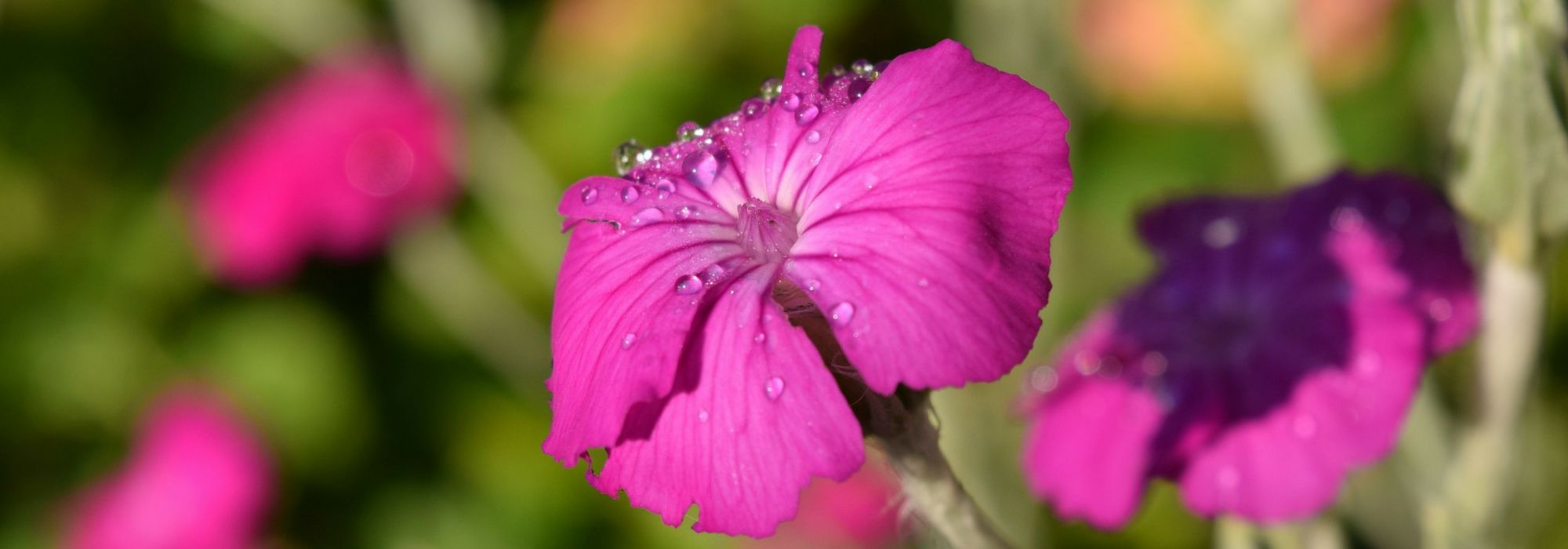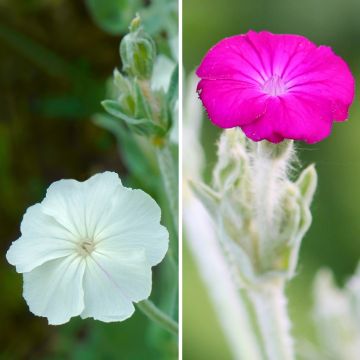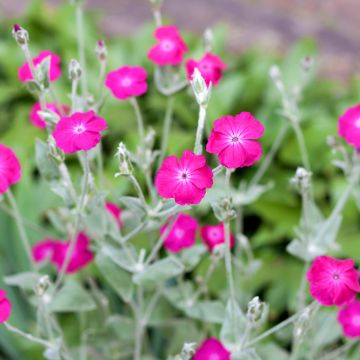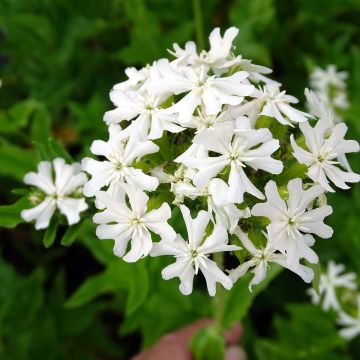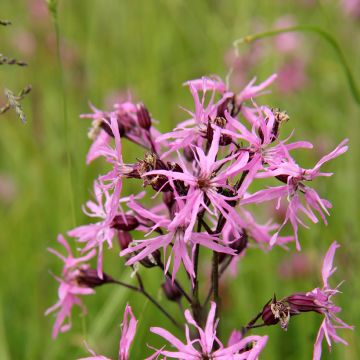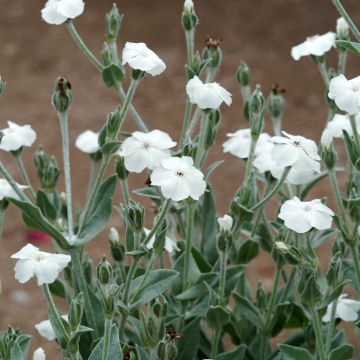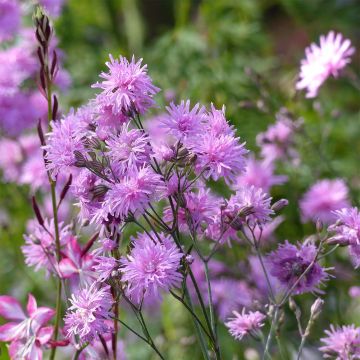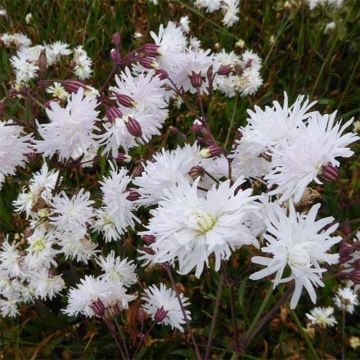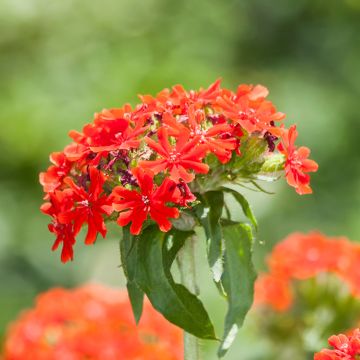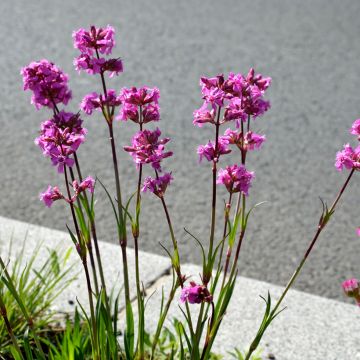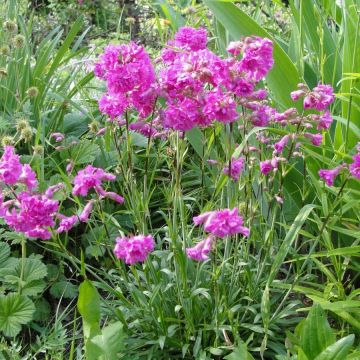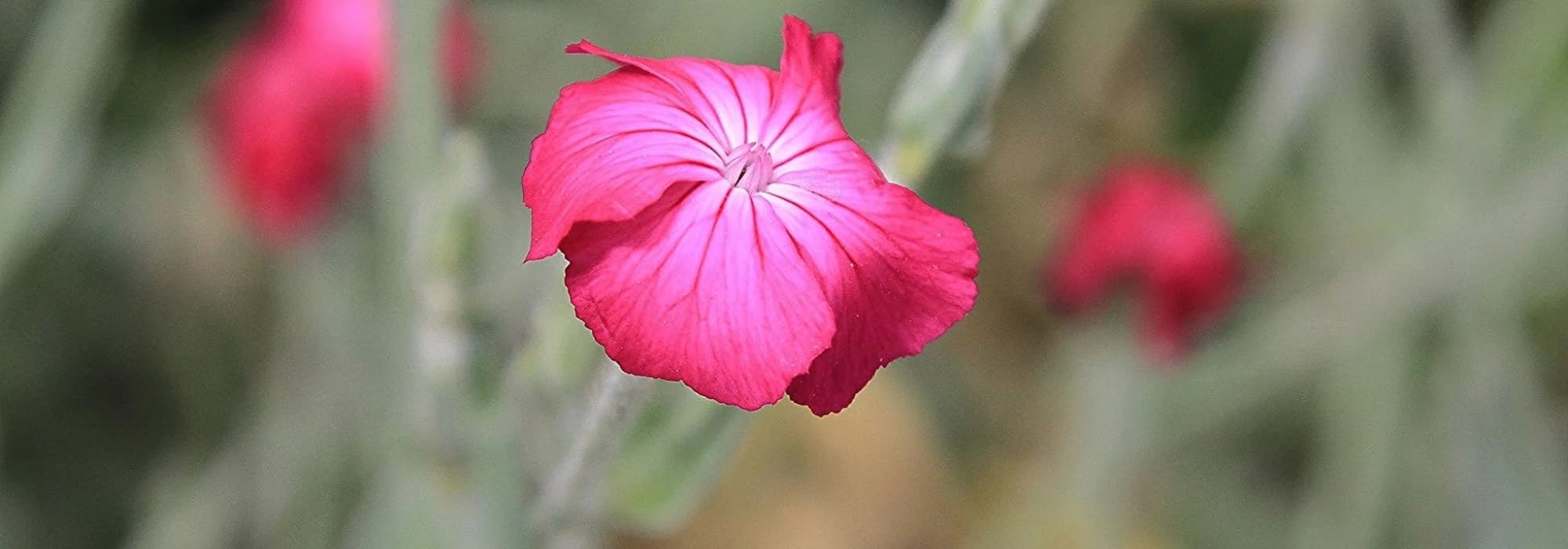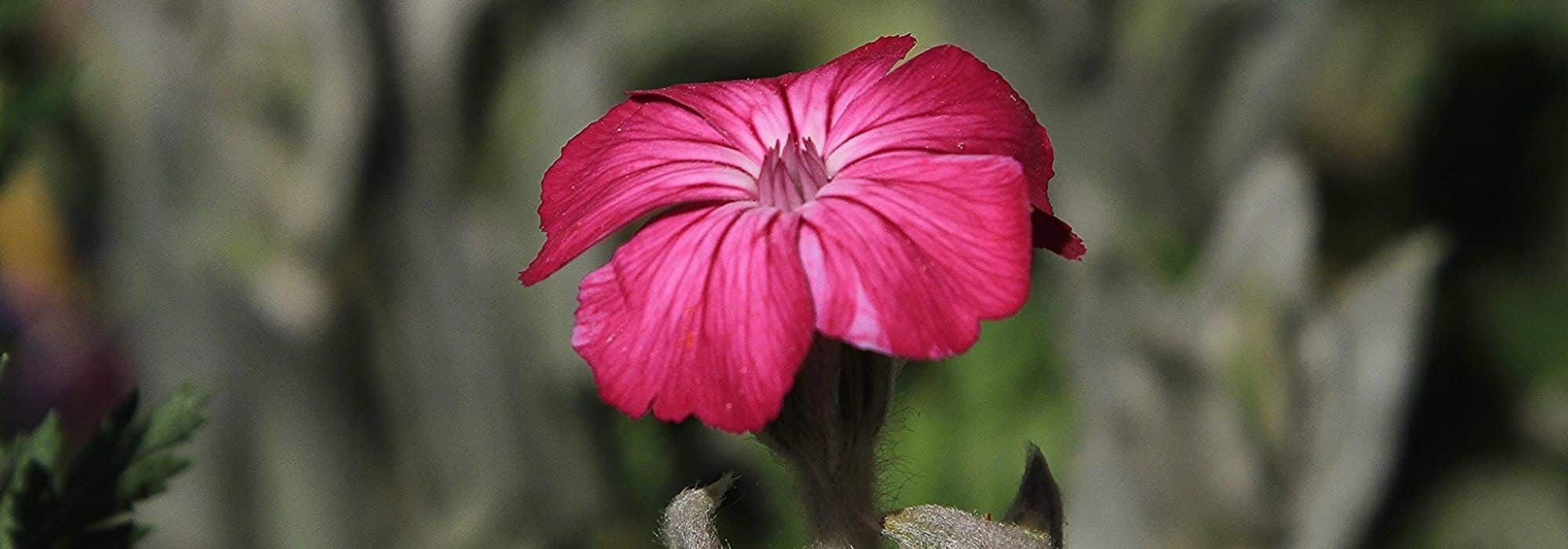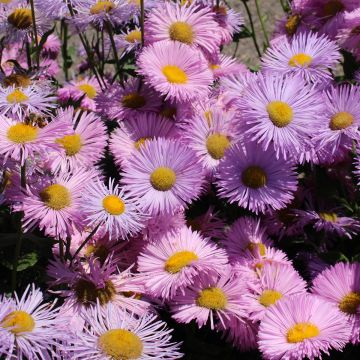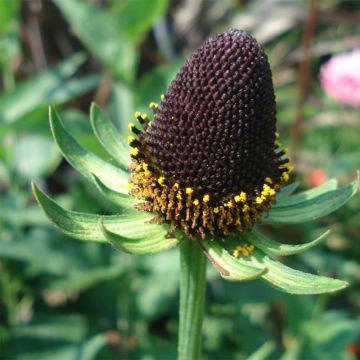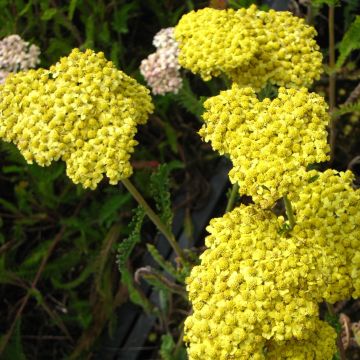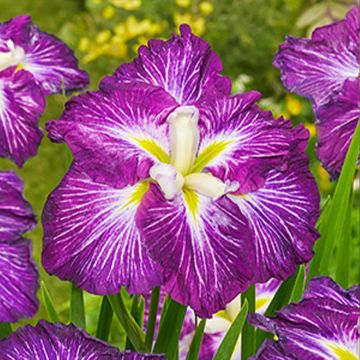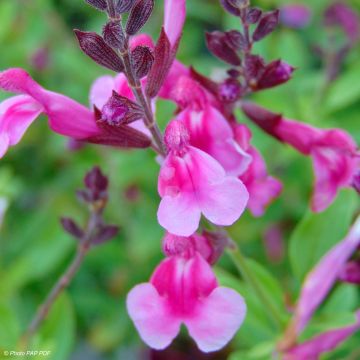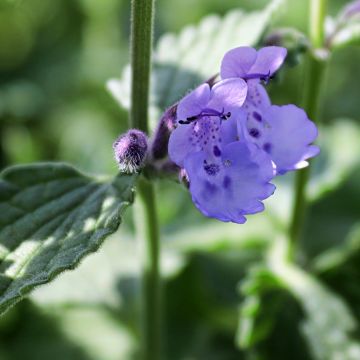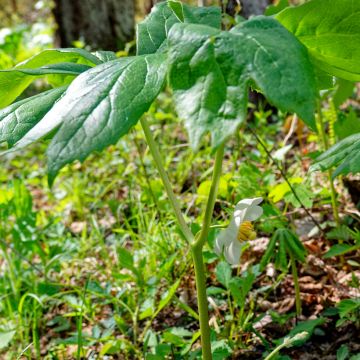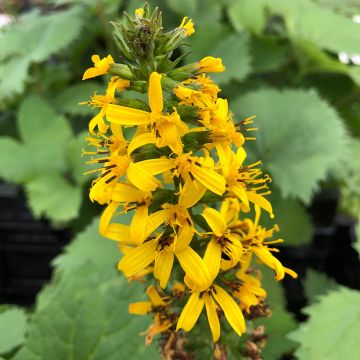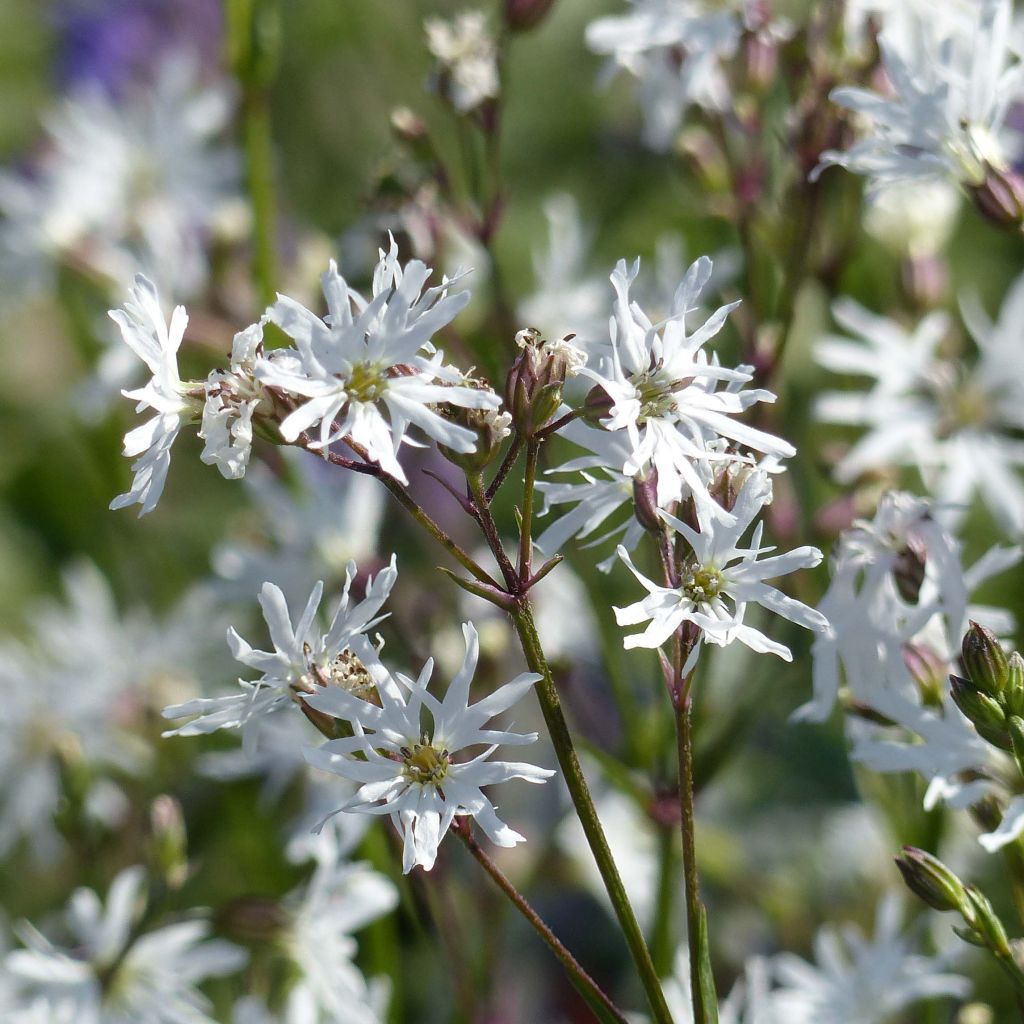

Lychnis flos-cuculi White Robin
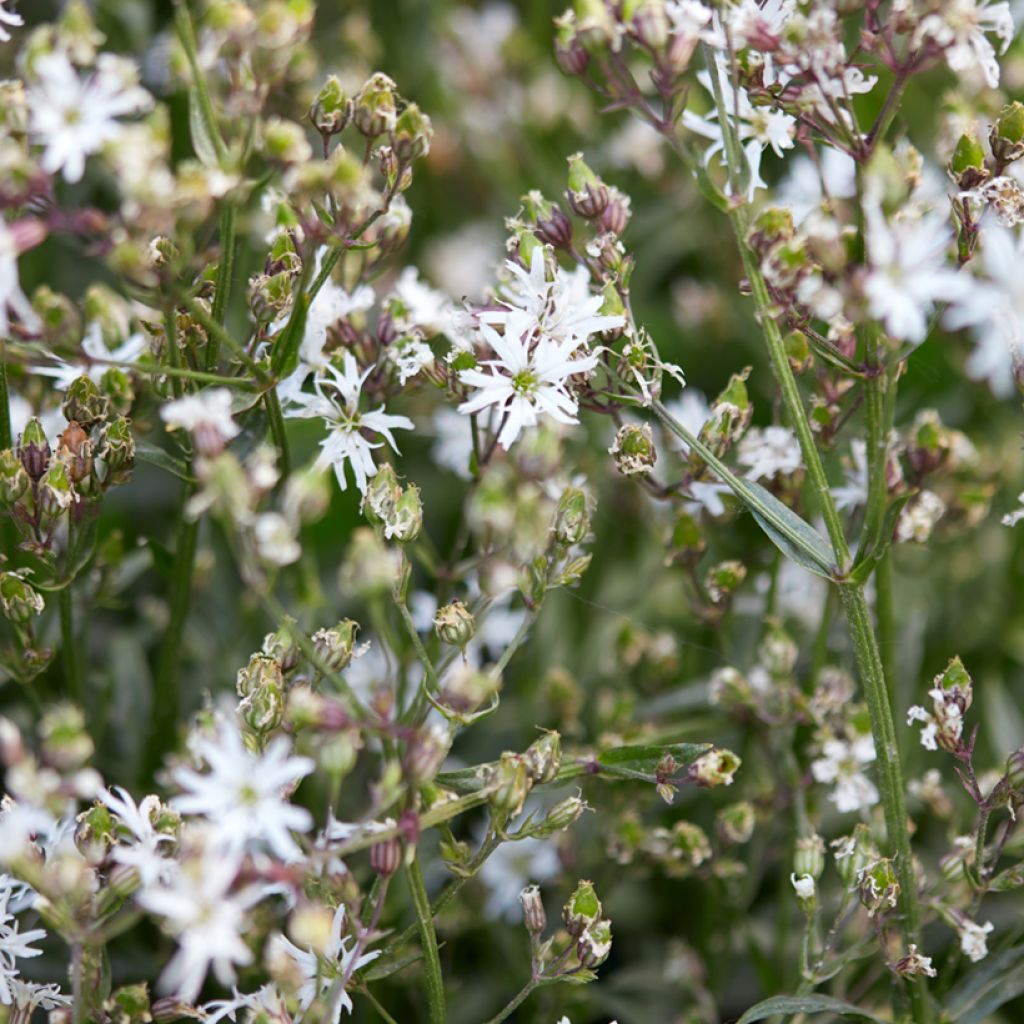

Lychnis flos-cuculi White Robin
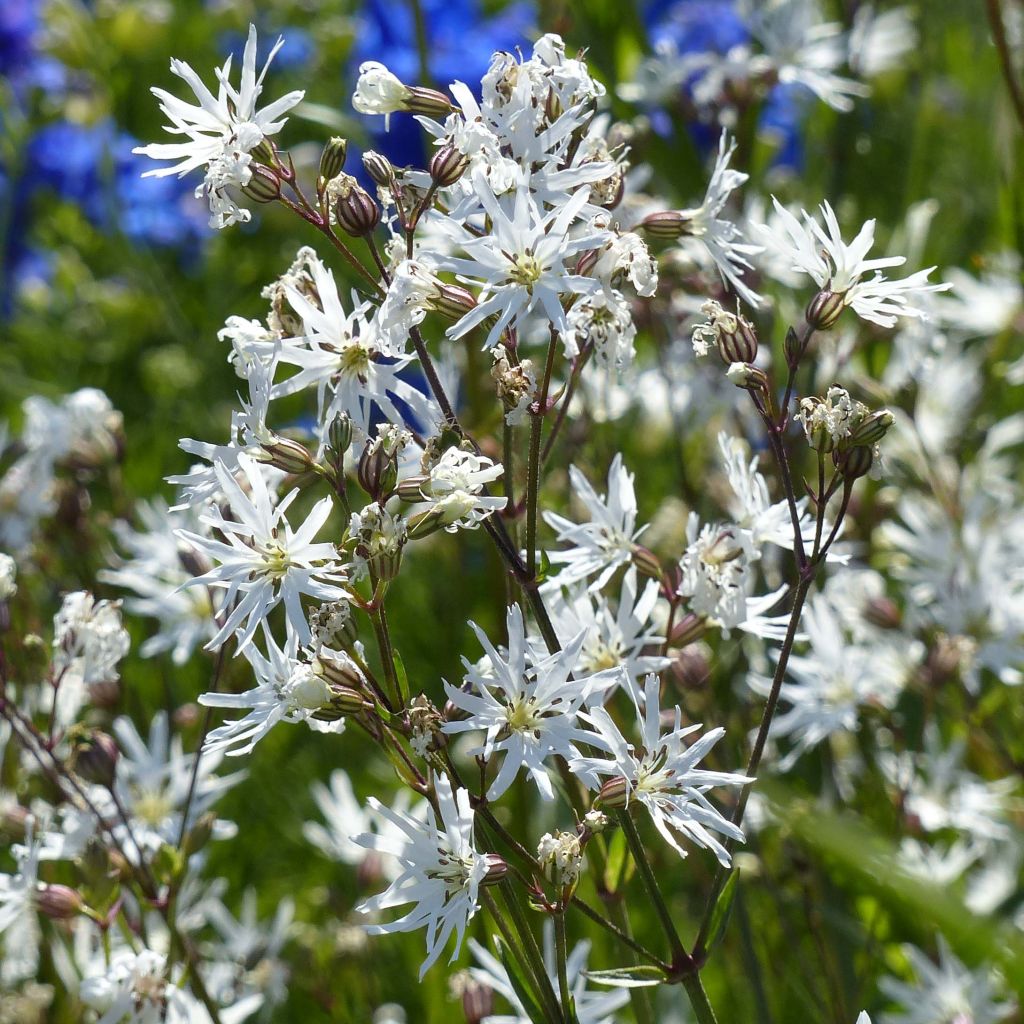

Lychnis flos-cuculi White Robin
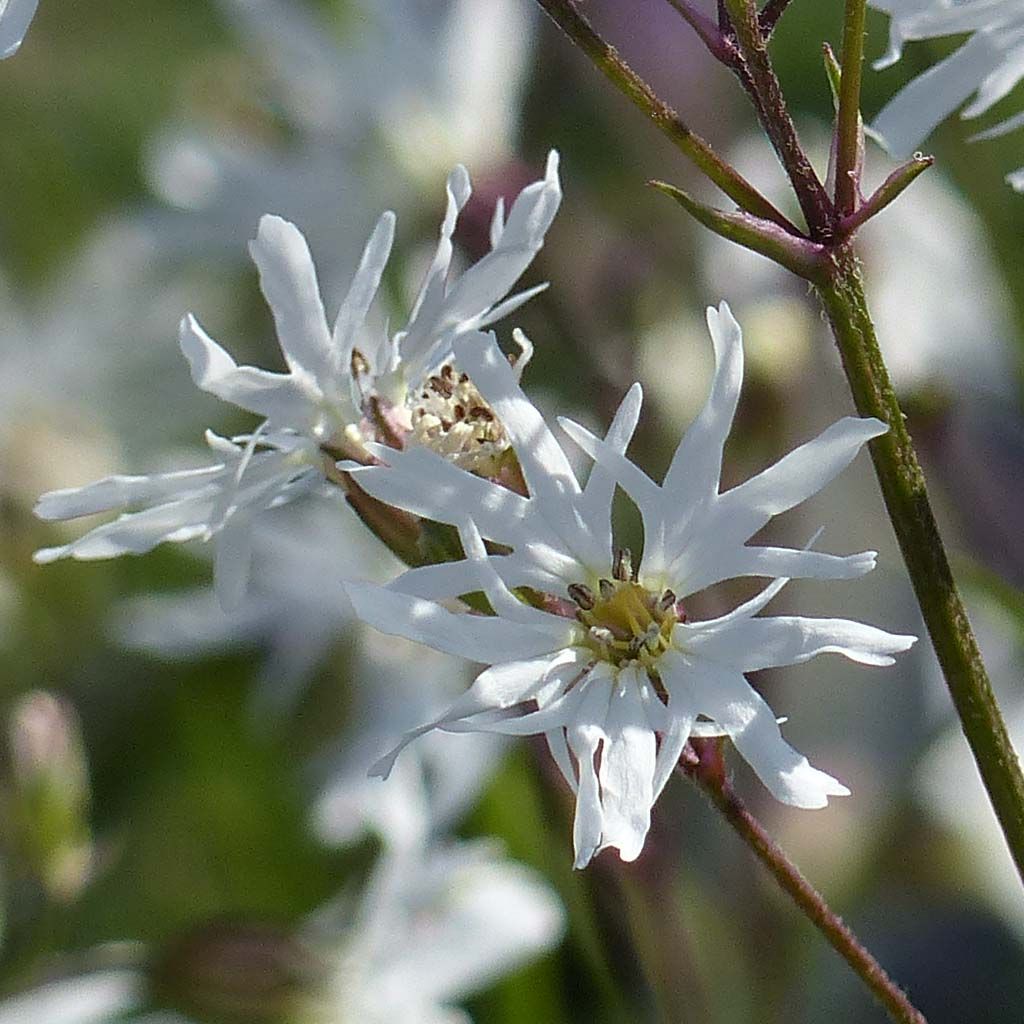

Lychnis flos-cuculi White Robin
Lychnis flos-cuculi White Robin
Lychnis flos-cuculi White Robin
Ragged Robin, Crow Flower, Cuckoo Flower, Cuckoo Gilliflower, Meadow Lychnis, Meadow pink, Wild William
Good recovery. Beautiful effect at the base of the roses.
Marielle G., 05/10/2017
Special offer!
Receive a €20 voucher for any order over €90 (excluding delivery costs, credit notes, and plastic-free options)!
1- Add your favorite plants to your cart.
2- Once you have reached €90, confirm your order (you can even choose the delivery date!).
3- As soon as your order is shipped, you will receive an email containing your voucher code, valid for 3 months (90 days).
Your voucher is unique and can only be used once, for any order with a minimum value of €20, excluding delivery costs.
Can be combined with other current offers, non-divisible and non-refundable.
Home or relay delivery (depending on size and destination)
Schedule delivery date,
and select date in basket
This plant carries a 12 months recovery warranty
More information
We guarantee the quality of our plants for a full growing cycle, and will replace at our expense any plant that fails to recover under normal climatic and planting conditions.

Does this plant fit my garden?
Set up your Plantfit profile →
Description
Lychnis flos-cuculi 'White Robin', also known as Ragged Robin or Cuckoo Flower, is a sturdy perennial plant, despite the delicate appearance of its charming ethereal flowering. Its abundant small white flowers are deeply laciniate, resembling light egret plumes. They appear in late spring and early summer, carried by astonishing purple stems. It is a fully hardy plant that thrives in moist soils and sunny pond edges. Its light and airy flowering, which comes alive with the slightest breeze, softens the stiffness of other perennials.
The cuckoo flower is named as such because it blooms when the cuckoo sings. It belongs to the Caryophyllaceae family and is a cousin of carnations. It is an upright perennial that thrives in wet areas of Europe (marshes, bogs) and can also be found in meadows up to 2500m (8202ft) altitude. Its base is a stoloniferous stump topped with lanceolate spatulate bright green leaves that can reach 12cm (5in) in length. From this base, branched reddish stems (50 to 70cm (20 to 28in)) emerge in May-June, bearing clusters of bell-shaped calyces, which are pinkish-purple in colour with red veins. The calyces open to release pure white flowers, about 3cm (1in) in diameter, with strongly dissected petals, forming almost very fine strips.
Their rather slender habit makes them perfect for planting en masse to create a hazy effect. You can plant them near a body of water, in moist soil, preferably in the sun, with companions that appreciate the same conditions, such as pink astilbes, candelabra primroses, coral-flowering heucheras, or Virginia bluebells and pink obedient plants. The plant will take some time to establish, but what a marvel when it does!
Lychnis flos-cuculi White Robin in pictures
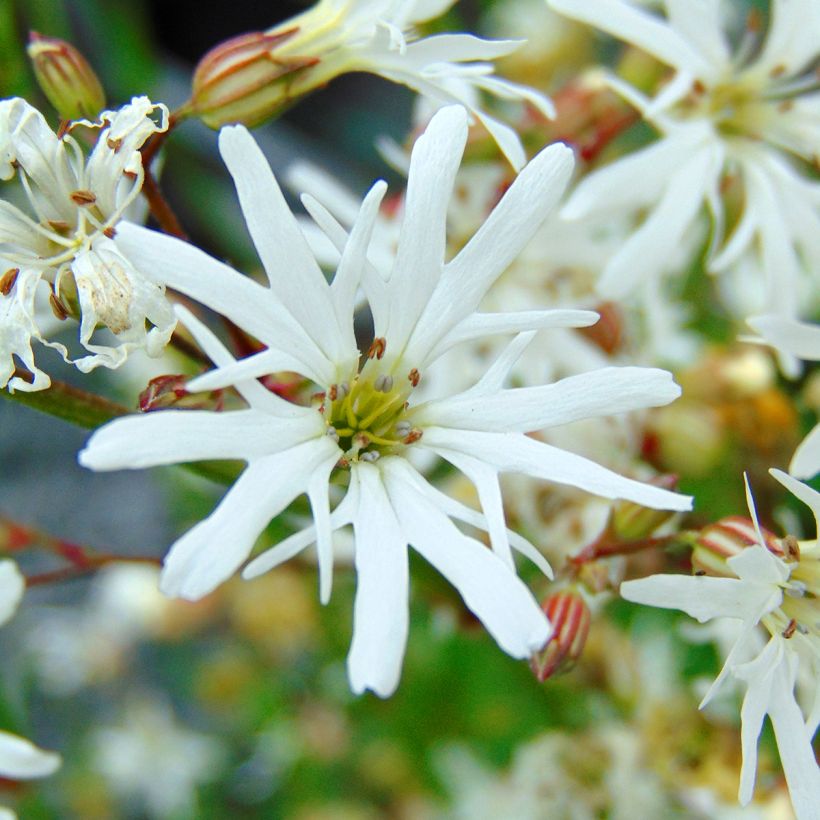

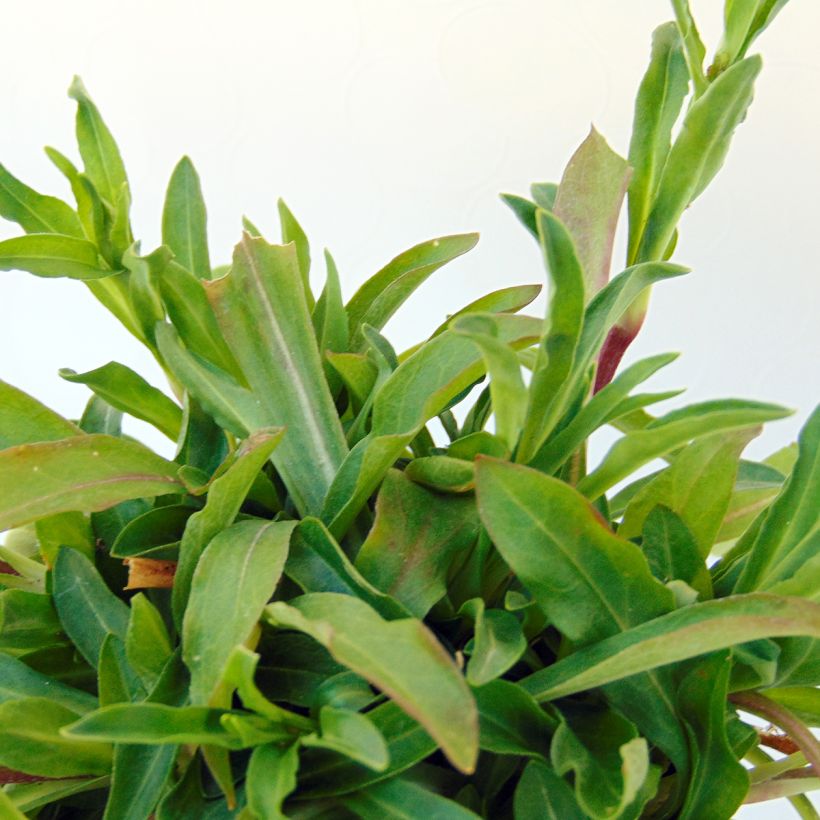

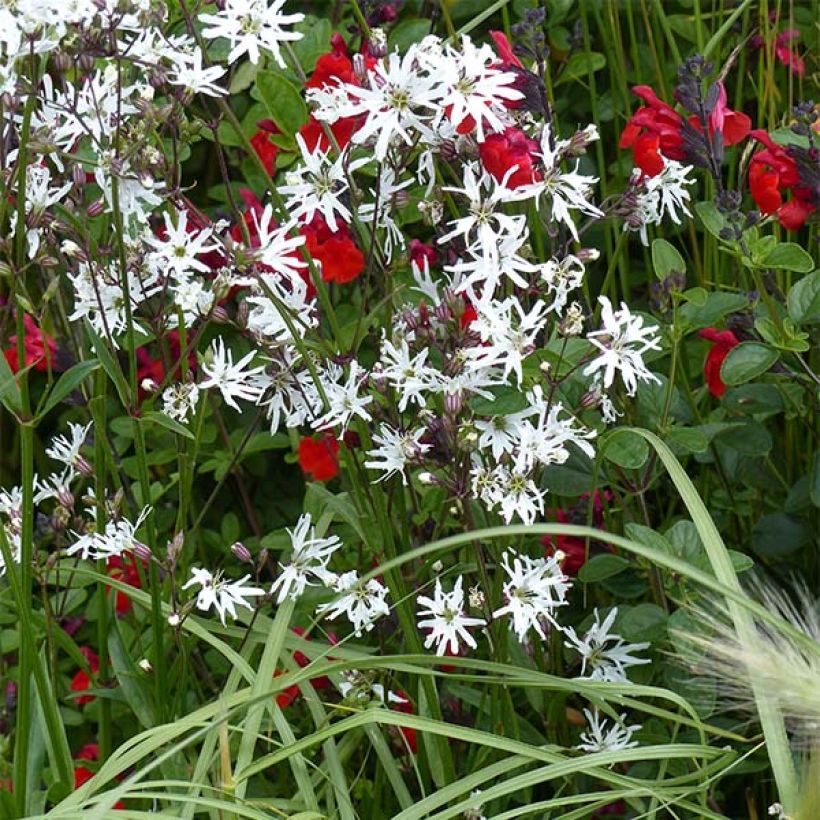

Flowering
Foliage
Plant habit
Botanical data
Lychnis
flos-cuculi
White Robin
Caryophyllaceae
Ragged Robin, Crow Flower, Cuckoo Flower, Cuckoo Gilliflower, Meadow Lychnis, Meadow pink, Wild William
Cultivar or hybrid
Other Lychnis
View all →Planting and care
Plant in a sunny position in autumn or spring in moist, rich soil. Remove faded flowers regularly to ensure a long flowering period. Use slug repellent to prevent attacks from gastropods, which are fond of young shoots. Divide the stump every 4 or 5 years.
Planting period
Intended location
Care
Planting & care advice
-
, onOrder confirmed
Reply from on Promesse de fleurs
Similar products
Haven't found what you were looking for?
Hardiness is the lowest winter temperature a plant can endure without suffering serious damage or even dying. However, hardiness is affected by location (a sheltered area, such as a patio), protection (winter cover) and soil type (hardiness is improved by well-drained soil).

Photo Sharing Terms & Conditions
In order to encourage gardeners to interact and share their experiences, Promesse de fleurs offers various media enabling content to be uploaded onto its Site - in particular via the ‘Photo sharing’ module.
The User agrees to refrain from:
- Posting any content that is illegal, prejudicial, insulting, racist, inciteful to hatred, revisionist, contrary to public decency, that infringes on privacy or on the privacy rights of third parties, in particular the publicity rights of persons and goods, intellectual property rights, or the right to privacy.
- Submitting content on behalf of a third party;
- Impersonate the identity of a third party and/or publish any personal information about a third party;
In general, the User undertakes to refrain from any unethical behaviour.
All Content (in particular text, comments, files, images, photos, videos, creative works, etc.), which may be subject to property or intellectual property rights, image or other private rights, shall remain the property of the User, subject to the limited rights granted by the terms of the licence granted by Promesse de fleurs as stated below. Users are at liberty to publish or not to publish such Content on the Site, notably via the ‘Photo Sharing’ facility, and accept that this Content shall be made public and freely accessible, notably on the Internet.
Users further acknowledge, undertake to have ,and guarantee that they hold all necessary rights and permissions to publish such material on the Site, in particular with regard to the legislation in force pertaining to any privacy, property, intellectual property, image, or contractual rights, or rights of any other nature. By publishing such Content on the Site, Users acknowledge accepting full liability as publishers of the Content within the meaning of the law, and grant Promesse de fleurs, free of charge, an inclusive, worldwide licence for the said Content for the entire duration of its publication, including all reproduction, representation, up/downloading, displaying, performing, transmission, and storage rights.
Users also grant permission for their name to be linked to the Content and accept that this link may not always be made available.
By engaging in posting material, Users consent to their Content becoming automatically accessible on the Internet, in particular on other sites and/or blogs and/or web pages of the Promesse de fleurs site, including in particular social pages and the Promesse de fleurs catalogue.
Users may secure the removal of entrusted content free of charge by issuing a simple request via our contact form.
The flowering period indicated on our website applies to countries and regions located in USDA zone 8 (France, the United Kingdom, Ireland, the Netherlands, etc.)
It will vary according to where you live:
- In zones 9 to 10 (Italy, Spain, Greece, etc.), flowering will occur about 2 to 4 weeks earlier.
- In zones 6 to 7 (Germany, Poland, Slovenia, and lower mountainous regions), flowering will be delayed by 2 to 3 weeks.
- In zone 5 (Central Europe, Scandinavia), blooming will be delayed by 3 to 5 weeks.
In temperate climates, pruning of spring-flowering shrubs (forsythia, spireas, etc.) should be done just after flowering.
Pruning of summer-flowering shrubs (Indian Lilac, Perovskia, etc.) can be done in winter or spring.
In cold regions as well as with frost-sensitive plants, avoid pruning too early when severe frosts may still occur.
The planting period indicated on our website applies to countries and regions located in USDA zone 8 (France, United Kingdom, Ireland, Netherlands).
It will vary according to where you live:
- In Mediterranean zones (Marseille, Madrid, Milan, etc.), autumn and winter are the best planting periods.
- In continental zones (Strasbourg, Munich, Vienna, etc.), delay planting by 2 to 3 weeks in spring and bring it forward by 2 to 4 weeks in autumn.
- In mountainous regions (the Alps, Pyrenees, Carpathians, etc.), it is best to plant in late spring (May-June) or late summer (August-September).
The harvesting period indicated on our website applies to countries and regions in USDA zone 8 (France, England, Ireland, the Netherlands).
In colder areas (Scandinavia, Poland, Austria...) fruit and vegetable harvests are likely to be delayed by 3-4 weeks.
In warmer areas (Italy, Spain, Greece, etc.), harvesting will probably take place earlier, depending on weather conditions.
The sowing periods indicated on our website apply to countries and regions within USDA Zone 8 (France, UK, Ireland, Netherlands).
In colder areas (Scandinavia, Poland, Austria...), delay any outdoor sowing by 3-4 weeks, or sow under glass.
In warmer climes (Italy, Spain, Greece, etc.), bring outdoor sowing forward by a few weeks.






























